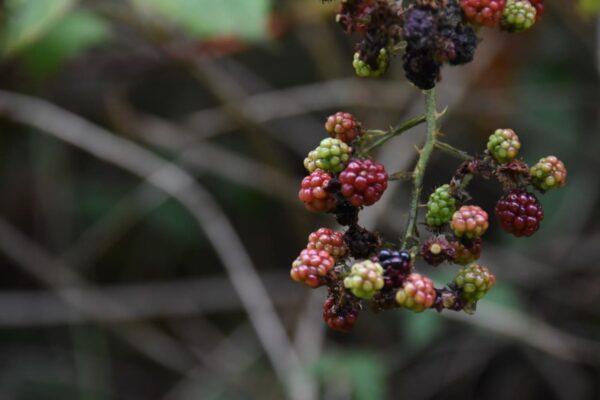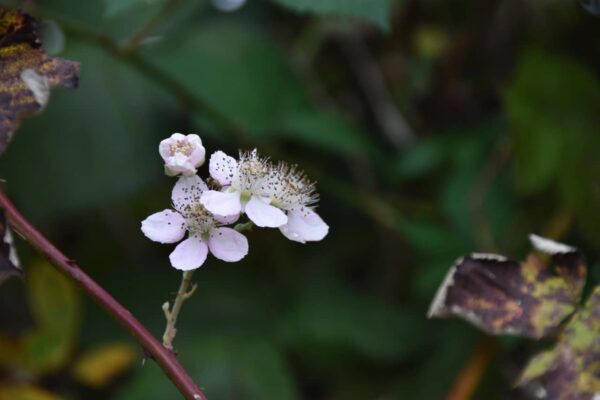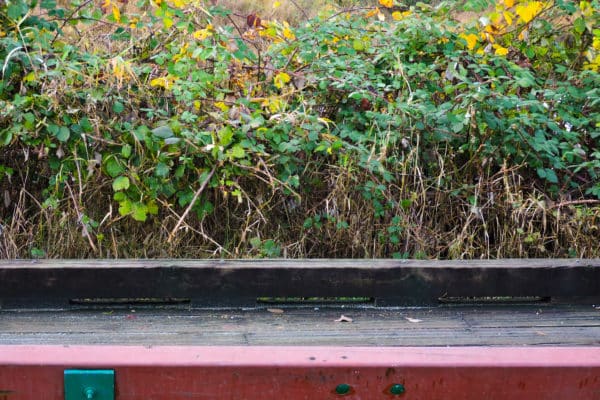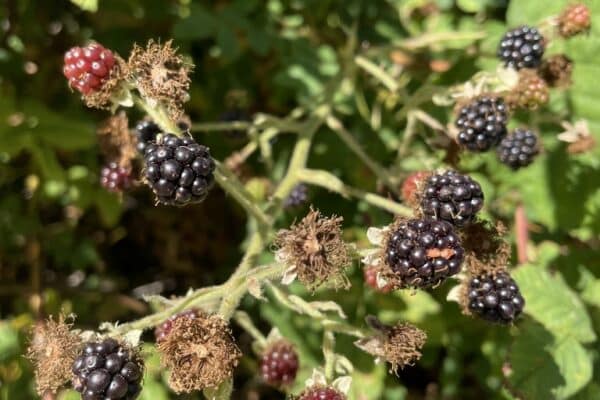Himalayan blackberry
About This Species
Himalayan blackberry (Armenian blackberry) is valued by humans for its delicious berries and was introduced from its native range of Armenia and Northern Iran. However, it easily invades disturbed sites, pastures, roadsides, streambanks, and forest edges. This plant crowds out low-growing vegetation and can create thickets so dense it limits the movement of large animals. Thickets can produce 7,000-13,000 seeds per m2. Himalayan blackberry also spreads by roots and stem fragments, as well as by birds and animals that eat the berries and disperse them. There is another invasive blackberry species present in British Columbia that is part of the same species complex and difficult to distinguish, Rubus bifrons. Himalayan blackberry is designated as a Regional Containment/Control species by the BC Provincial Priority Invasive Species List.
How to Identify
Himalayan blackberry can grow up to 5 m tall, with canes up to 12 m long that root wherever they touch the ground.
Flowers are small, white to pinkish with 5 petals each. Berries grow to 2 cm long and are round, black, shiny and hairless.
Leaves are large, rounded and generally grouped in fives on first-year canes, and threes on second-year canes.
Take Action
Prevention is the best approach.
- Himalayan blackberry Factsheet PDF
-
If you need advice about invasive species on your property or you are concerned about reported invasives in your local area, contact your local government or regional invasive species organization.

Plantwise
Learn about best practices
A few non-invasive alternatives to plant instead of Himalayan blackberry include:
- Nootka rose (Rosa nutkana)
- Thimbleberry (Rubus parviflorus)
- Marionberry or Boysenberry (Rubus ‘Marion’ or ‘Boysen’)
- Red raspberry (Rubus idaeus hybrids)
- Black huckleberry (Vaccinium membranaceum)
REPORT TO PROTECT BC’S BIODIVERSITY

Use the app
Observe and report to protect BC’s biodiversity

Report through this website
Use our form to tell us what you’re seeing and where.






